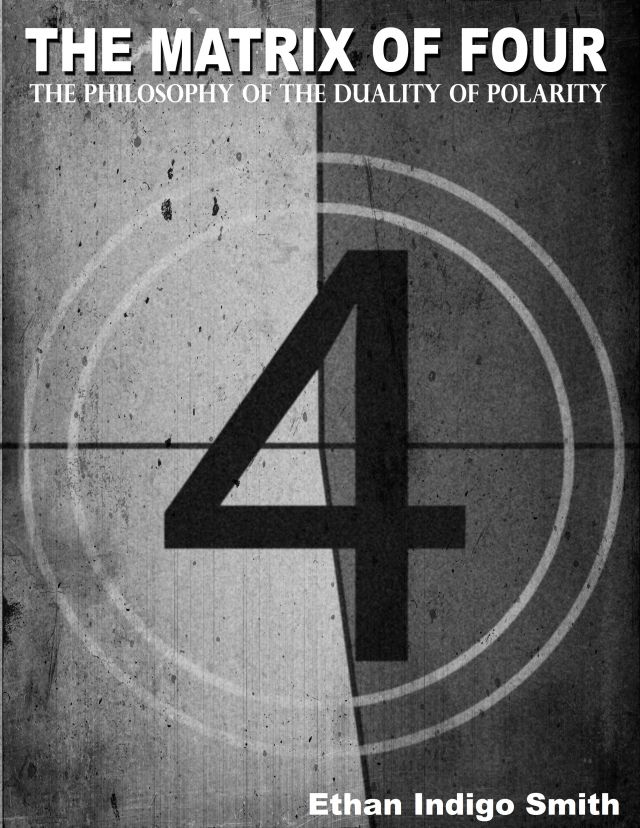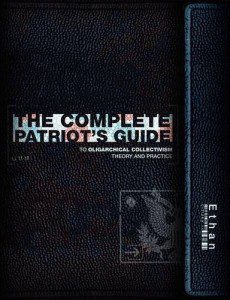The matrix of four, the philosophy of the duality of polarity is metaphilosophy. Philosophy is a way of thinking applicable to a limited number of subjects or objects. Metaphilosophy is a thinking model applicable to numerous and diverse subjects and objects. When I first began writing this I originally thought I invented the concept, but soon realized my expression of it was just a small part of a much bigger and ancient idea. The matrix of four, the philosophy of the duality of polarity inevitably develops individual awareness and elevates consciousness. It can also instigate and enhance one’s intuition and understanding thereof. The formula is also applicable to, and assists understanding of politics, science, theology, mathematics, reason, debate, meditation and innumerable structures and systems.
I utilized the metaphilosophy for years, as you no doubt have too. I referenced it repeatedly, I presented nuanced thoughts composed of it, but was for all extents and purposes unaware of its specifics until I began to write and research. It’s a philosopher’s tool used constantly in rhetoric and wit, yet it often goes unmentioned and unseen. Metaphilosophy is like that, present yet silent, permeating so many subjects and objects as to be practically unnoticed. The matrix of four is ever present and yet elusive, and in some circles aspects of it have even been variously suppressed.
I initially conceptualized a set of four concerning the subject of our thinking and being in the political spectrum. In The Complete Patriot’s Guide to Oligarchical Collectivism I posit there are four political archetypes; idiots, zealots, elitists and patriots. I invented this set in order to understand individuals and bypass traditional prejudiced labels. The deciding factor in this matrix is individual reaction to information. Idiots don’t question relevance, finding comfort in their ignorance. Zealots question limitedly, in accordance to preconceptions. Elitists question in order to advance power and do not share information. Patriots question and share information openly.
These four base political archetypes correlate with Gandhi’s quote used as the epigraph for this book, and much more. Idiots laugh, zealots ignore, elitists war, and patriots win peace, through peace. The epigraph suggests there are four stages of reaction, and also four types of reactionaries. Gandhi had new ideas which were difficult for people to accept in a feudal world and knew all about how individuals react to new ideas and information.
Gandhi was a patriot among idiots, zealots and elitists. My definition of a patriot is more comparable to a peaceful activist or inactivist, like Gandhi, not a nationalist, or jingoist, or uniformed institutional representative. Perhaps my definition of patriotism would be best expressed as matriotism, of open maternal love for locals, land and liberty, as opposed to the blind loyalty to patriarchal, martial rule that patriotism is mostly associated with.
The idea on political thinking and being mirrored the ideas of many others, Gandhi’s point for instance and also subtle layers in George Orwell’s 1984, the inspiration for The Guide. There are clearly, though subtly, four classes of people described in this epic and influential political fiction; the Inner Party, the Outer Party, the Proles and the Brotherhood. George also implies there is a tendency to portray three rather than four, through the suggested elimination of the Brotherhood from the story.
The first sentence from what is known as the book within the book in 1984, titled The Theory and Practice of Oligarchical Collectivism, curiously states there are three types of people in the world, “Throughout recorded time, and probably since the end of the Neolithic Age there have been three kinds of people in the world, the High, the Middle and the Low.”
One layer of 1984 concerns the elimination of language and words, while another reveals there are four parts and that there is an inclination to eliminate the distinct fourth part. In reality, for many different reasons, aspects of the truth are removed akin to the outright elimination of language. And in reality, the fourth part of many sets is often eliminated or unsaid as well as being distinct among them.
Judging people as high, middle and low is unfair and ridiculous. George was well aware of this. However understanding people according to how they react to information and less so what information they have, is possibly the most accurate and fair way to understand people. The specifics of thinking and being are difficult to view and quantify, but how people react to specific information is one clear window. We either ignore all relevant information, we choose what we want to ignore to maintain view, we use information for our own gains or we openly accept and share information for all to prosper no matter.
The idiots, zealots, elitists and patriots set is a fair way to understand political thinking and being based on our reaction to information, and via the matrix of four, it’s complete. I verified the set through correlating it with other ideas such as Gandhi’s statement and Orwell’s profound story. I limitedly applied the metaphilosophy as many have before me, in my case to politics. I was was basically unknowingly influenced by it and conjured my own set of four utilizing it, and yet still didn’t recognize even the entire silhouette of the idea. I felt there was more to four, I just had no idea how much more there was. I had been struck by the matrix of four, the philosophy of the duality of polarity, but had yet to even come up with the term to describe it. Sometimes philosophy and invention is like that, an intuitive course before becoming a recognized route.
Over time I realized there were so many examples of the formula, that it was a matrix applicable to everything from political observation to personal meditation, that it was a true metaphilosophy, not limited to just political science. Politics finds its way into everything, even philosophy, even supposed science, so as to influence political thinking using what is politically steering. My observations of politics, specifically the thinking and being of individuals and institutions, led me to the metaphilosophy that is partly political, being metaphilosophy, but is based on real scientific absolutes, not politics.
As the metaphilosophy coalesced into focus I found the words to express the concept, the title to the book. There wasn’t one moment where I had an epiphany of sorts, but rather several when mathematical and spiritual concepts left me stunned. I still occasionally encounter new powerful ideas reflective of the matrix of four. The concept is mathematical, but goes beyond the numerical comparative. For instance after coming up the title for the metaphilosophy I was shown the concept behind what is basically the oldest symbol on Earth. When I learned about the four parts of Om, I felt some of the most immense and intense of what I have come to call shivers of signification. Om has four base parts in its sound and symbolism. I knew then with certainty that the idea was not mine, but rather an ancient and perhaps eternal idea, a matrix onto itself, a metaphilosophy I had simply recognized.
Every time I learned a new way to utilize the matrix or another way it had been utilized before, I experienced the shivers of signification. The matrix of four, the philosophy of the duality of polarity is metaphilosophy. It is based on absolutes and yet as metaphilosophy, it is not an absolute in itself. It cannot be. Ultimately this is not a flaw, for the philosophies and doctrines presented as absolute truth or absolute infallible plan, have consistently been the most flawed and most dangerous ideas to ever be put forth.
Metaphilosophy has to be applicable to everything from meditation, or individual consciousness, to consideration of politics, or mass consciousness, a mirror reflecting the inner and outer world, joining object and subject. It should be based on absolutes and yet in order to remain unflawed, metaphilosophy must have what some might consider one flaw, that it not be a rigid absolute. Valid metaphilosophy is like American Indian rug, bowl and basket weaving patterns. Each design is perfect, except for one purposefully included skip in the pattern, so as to give the design freedom.
For the rest of the book, it is free this week, through 3/26 Saturday.








